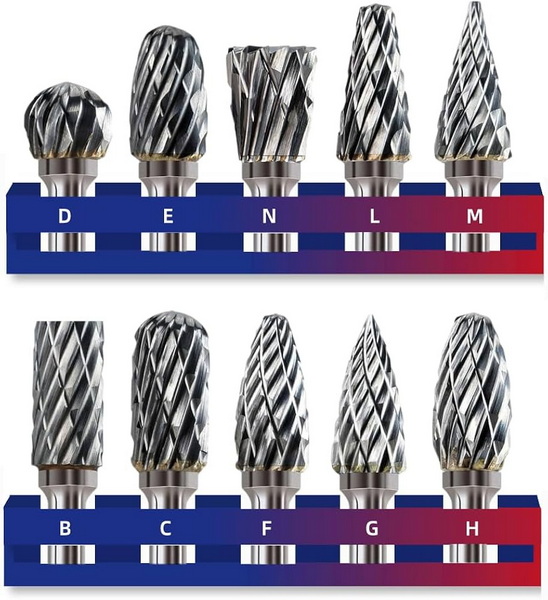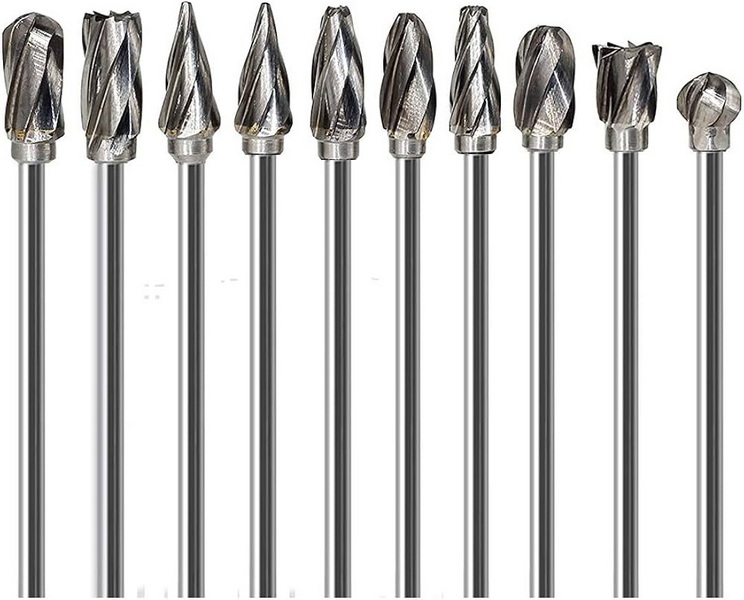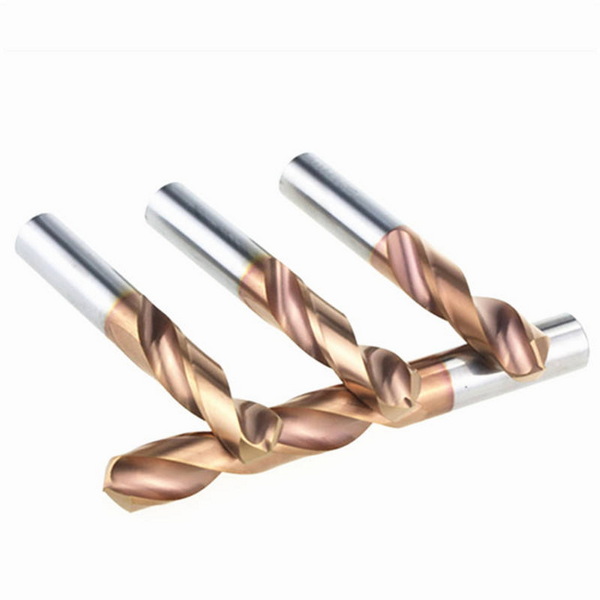Content Menu
● Introduction to Titanium and Tungsten Carbide Drill Bits
>> Titanium Drill Bits
>> Tungsten Carbide Drill Bits
● Comparison of Titanium and Tungsten Carbide Drill Bits
>> Hardness and Durability
>> Heat Resistance
>> Cost and Availability
>> Applications
● Tungsten Titanium Carbide: A Hybrid Material
● Detailed Applications of Tungsten Carbide Drill Bits
● Maintenance and Longevity of Drill Bits
● Environmental Impact and Sustainability
● Choosing the Right Drill Bit for Your Project
● Conclusion
● Frequently Asked Questions
>> 1. What is the primary difference between titanium and tungsten carbide drill bits?
>> 2. Which drill bit is more cost-effective for general use?
>> 3. Are tungsten carbide drill bits suitable for drilling wood?
>> 4. How does the heat resistance of titanium-coated bits compare to tungsten carbide bits?
>> 5. What are the typical applications of tungsten titanium carbide?
● Citations:
When it comes to choosing the right drill bits for your projects, whether they are industrial, construction, or DIY, understanding the materials used in drill bits is crucial. Two popular options are titanium-coated drill bits and tungsten carbide drill bits. Each has its unique properties, advantages, and applications. In this article, we will delve into the details of both materials, comparing their hardness, durability, cost, and specific uses to help you decide which one is better suited for your needs.

Introduction to Titanium and Tungsten Carbide Drill Bits
Titanium Drill Bits
Titanium drill bits are not made from pure titanium but are typically high-speed steel (HSS) bits coated with a layer of titanium nitride (TiN), titanium aluminum nitride (TiAlN), or titanium carbonitride (TiCN). This coating enhances the bit's hardness and heat resistance compared to uncoated steel bits. Titanium-coated bits are known for their ability to reduce friction during drilling, which helps keep the bit cooler and prevents it from binding in softer materials like aluminum and copper[1][10].
Titanium Drill Bit Coatings:
- Titanium Nitride (TiN): Gold in color, this is the most common coating and offers excellent wear resistance.
- Titanium Aluminum Nitride (TiAlN): Violet in color, suitable for drilling titanium and high-alloy steels.
- Titanium Carbonitride (TiCN): Blue-grey in color, ideal for drilling stainless steel and cast iron[10].
Tungsten Carbide Drill Bits
Tungsten carbide drill bits are made from tungsten carbide, a compound of tungsten and carbon. They are known for their exceptional hardness and wear resistance, making them ideal for drilling through tough materials like hardened steel, cast iron, and even concrete[5][9]. Tungsten carbide bits are often used in heavy-duty applications where high durability and precision are required.
Comparison of Titanium and Tungsten Carbide Drill Bits
Hardness and Durability
- Titanium Drill Bits: These bits have a Mohs hardness rating of about 8.5, which is higher than plain steel but lower than tungsten carbide. They are suitable for softer metals and offer good durability for their price[1][10].
- Tungsten Carbide Drill Bits: With a Mohs hardness rating of 9-9.5, tungsten carbide bits are significantly harder and more durable than titanium-coated bits. They are ideal for drilling through hardened steel and other tough materials[5][9].
Heat Resistance
- Titanium Drill Bits: The titanium coating provides some heat resistance, helping to keep the bit cooler during drilling. However, they are not as effective as tungsten carbide in high-temperature applications[1].
- Tungsten Carbide Drill Bits: Tungsten carbide bits excel in high-temperature conditions, maintaining their edge even at very high speeds and temperatures[1][5].
Cost and Availability
- Titanium Drill Bits: Generally less expensive than tungsten carbide bits, making them a cost-effective option for lighter applications[10].
- Tungsten Carbide Drill Bits: More expensive due to their exceptional hardness and durability, but they offer longer tool life in heavy-duty applications[5][9].
Applications
- Titanium Drill Bits: Suitable for drilling softer metals like aluminum, copper, and stainless steel. They are also effective in wood and composite materials due to their resistance to pitch and sap buildup[1][10].
- Tungsten Carbide Drill Bits: Ideal for heavy-duty applications involving hardened steel, cast iron, concrete, and other tough materials[5][9].

Tungsten Titanium Carbide: A Hybrid Material
While not commonly used in drill bits, tungsten titanium carbide is a material that combines the strengths of both tungsten carbide and titanium. It offers exceptional hardness and wear resistance, making it suitable for high-performance applications such as cutting tools and wear-resistant coatings[2].
Detailed Applications of Tungsten Carbide Drill Bits
Tungsten carbide drill bits are versatile and can be used across various industries:
- Manufacturing: Essential for drilling precise holes in materials like printed circuit boards (PCBs), where exact hole diameters are critical[6].
- Construction: Valued for their ability to drill through tough materials like concrete and steel, making them efficient for tasks such as installing anchors in masonry structures[6].
- Oil and Gas Industry: Crucial for drilling operations, especially in tough geological formations, due to their ability to withstand high pressures and temperatures[6].
Maintenance and Longevity of Drill Bits
To maximize the lifespan of both titanium and tungsten carbide drill bits, proper maintenance is essential:
- Cleaning: Regularly clean the bits to remove debris and prevent corrosion.
- Storage: Store them in a dry place to prevent rust.
- Handling: Avoid dropping or impacting the bits, as this can cause damage, especially to tungsten carbide bits which are more brittle[8].
Environmental Impact and Sustainability
Tungsten carbide drill bits offer environmental benefits due to their recyclability. The ability to recycle tungsten carbide reduces waste and supports sustainable practices, making them a more environmentally friendly option compared to constantly producing new drill bits[6].
Choosing the Right Drill Bit for Your Project
When deciding between titanium-coated and tungsten carbide drill bits, consider the specific requirements of your project:
- Material Type: If you're working with softer materials like wood or aluminum, titanium-coated bits might suffice. However, for hardened steel or concrete, tungsten carbide is the better choice.
- Budget: Titanium bits are generally more affordable upfront, while tungsten carbide bits offer long-term savings through reduced replacement needs.
- Precision and Durability: If precision and durability are paramount, tungsten carbide bits are superior.
Conclusion
Choosing between titanium-coated drill bits and tungsten carbide drill bits depends on the specific requirements of your project. Titanium bits are ideal for softer materials and offer a cost-effective solution with good durability. On the other hand, tungsten carbide bits are the go-to choice for heavy-duty applications involving tough materials like hardened steel and concrete, offering superior hardness and wear resistance.

Frequently Asked Questions
1. What is the primary difference between titanium and tungsten carbide drill bits?
The primary difference lies in their hardness and durability. Tungsten carbide bits are significantly harder and more durable, making them suitable for heavy-duty applications, while titanium-coated bits are better suited for softer materials.
2. Which drill bit is more cost-effective for general use?
Titanium-coated drill bits are generally more cost-effective for general use, especially when drilling softer materials.
3. Are tungsten carbide drill bits suitable for drilling wood?
While tungsten carbide bits can be used for drilling wood, they are typically overkill for this application. Titanium-coated bits are often preferred for wood due to their resistance to pitch and sap buildup.
4. How does the heat resistance of titanium-coated bits compare to tungsten carbide bits?
Tungsten carbide bits have superior heat resistance, maintaining their edge even at high temperatures, whereas titanium-coated bits provide some heat resistance but are not as effective in extreme conditions.
5. What are the typical applications of tungsten titanium carbide?
Tungsten titanium carbide is used in high-performance applications such as cutting tools, wear-resistant coatings, and parts for the aerospace and automotive industries due to its exceptional hardness and wear resistance.
Citations:
[1] https://guesstools.com/titanium-vs-carbide-drill-bits/
[2] https://www.tungstenman.com/tungsten-titanium-carbide.html
[3] https://www.gettyimages.hk/detail/%E7%85%A7%E7%89%87/tungsten-carbide-machining-drill-bits-%E5%85%8D%E7%89%88%E7%A8%85%E5%9C%96%E7%89%87/1297149846?phrase=food
[4] https://www.istockphoto.com/photos/titanium-drill-bit
[5] https://ruwag.co.za/blogs/news/everything-you-need-to-know-about-carbide-drill-bits
[6] https://heegermaterials.com/blog/79_tungsten-carbide-vs-titanium-carbide.html
[7] https://blog.iqsdirectory.com/tungsten-carbide/
[8] https://www.thdrillingtools.com/blog/carbide-drill-bits-vs-titanium-3-key-differences
[9] https://www.aemmetal.com/news/tungsten-carbide-vs-titanium.html
[10] https://primatooling.co.uk/carbide-vs-titanium-drill-bits/
[11] https://www.reddit.com/r/Tools/comments/1d6odcj/what_is_each_drill_bit_tip_used_for/
[12] https://www.mazin.tech/en/en-columns/65e9a1ed79e945a5ad5056d8
[13] https://arstechnica.com/civis/threads/drill-bits-hss-vs-titanium-vs-carbide-or-cobalt.413366/
[14] https://www.tungstenman.com/tungsten-carbide-tools-the-pros-and-cons.html
[15] https://yijinsolution.com/news-blog/tungsten-vs-titanium/
[16] https://www.freepik.com/free-photos-vectors/titanium-drill-bits
[17] https://www.alamy.com/stock-photo/tungsten-carbide-tool.html
[18] https://richconn.com/titanium-vs-tungsten/
[19] https://shop.machinemfg.com/titanium-vs-tungsten-whats-the-difference/
[20] https://www.kennametal.com/us/en/resources/blog/metal-cutting/tungsten-carbide-versus-cobalt-drill-bits.html
[21] https://www.reddit.com/r/Tools/comments/11lycr0/is_this_tungsten_carbide_or_titanium_carbide_is/
[22] http://www.altisstech.com/titanium-short-radius-drill-pipe.html
[23] https://www.istockphoto.com/photos/tungsten-carbide
[24] https://www.drillbitwarehouse.com/product/titanium-hss-jobber-drill-bit-11-64/
[25] https://www.istockphoto.com/photos/tungsten-carbide-drill-bits
















